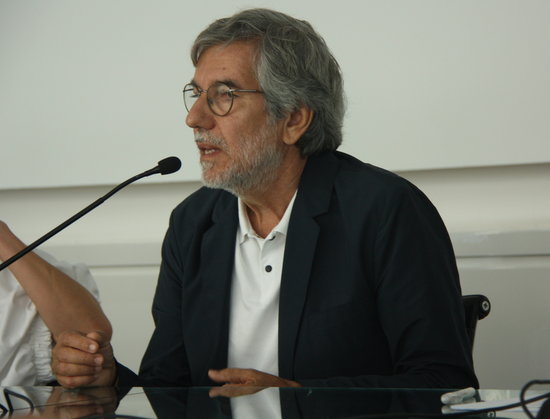Contemporary Art from all over the world comes to Barcelona
Around 75 galleries from 5 continents will draw around 15,000 visitors over the weekend

September 26-29 marks the 12th edition of the Swab Barcelona Contemporary Art Fair. The event will be held at the Pavelló d’Itàlia Fira, off Plaça d’Espanya, and will be open to the general public throughout the Friday, Saturday and Sunday afternoon.
The event was founded in 2006 by collector Joaquín Díez-Cascón, who “wanted to create a space to share the artistic expressions and ideas that fascinated me at the time with Barcelona and its citizens.”
The festival brings together galleries, artists, curators and collectors from all over the world for exhibitions, performances and discussions. Here is a short preview of what to expect this year.
New this year: Video Box
Technology is becoming more and more integrated in contemporary art. A collaboration between SWAB and Aesthetica Magazine has led to the creation of Video Box, a space dedicated to diversity and artistic exploration through video.
The program will display reflections on the tensions between large-scale and small-scale human relationships, from cultural oppression to relationships in a home environment.
The films have already been displayed at renowned festivals such as Rotterdam Film Festival and Clermont Ferrand.
STIMULUS
The Ephemeral program this year presents a selection of works that increase public interaction, under the title STIMULUS.
Artists have used the materials to optimize sensory stimulation in order to be able to understand the world through senses, our primordial channel of communication.
Performances
There are several performances over the course of the weekend, a full list of which can be found on the fair’s official website.
The headline performance is called “Love, the machine and Marcel Proust”, which intends to explore the access to art that has been mediated by the introduction of modern technology, and the implications of technology’s role on artistic discourse.
Other acts that continue this are Kay Schuttel’s “Stand by”, where through technology the roles of audience and performers are reversed, and Laura Llaneli’s “Lovelace”, which involves live music composition on computer software whilst debating the difference between the human voice and machine voice.
And more…
There are several returning elements of the fair - “Swab thinks” offers discursive platforms between experts and attendees alike. This year, themes are the position of women in art and the impact of sustainability and technology on artistic practices.
“Swab reading” also returns, a program that studies publications as artistic mediums. Finally, the fair is a family occasion: “Swab kids” is a section dedicated to the sense of smell, and invites child participation.